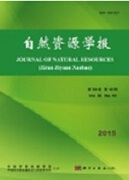
Based on the energy prices of China and foreign countries, industry development and energy consumption of China in the period of 1978-2012, this paper analyzes the influen-cing paths, the static and dynamic effect of domestic and foreign energy prices on energy consumption of China through Granger Causality test, regulatory effect model and state space model. Firstly, it is found that there’s no direct causality between China’s energy price and energy consumption, but the former can impact on the latter through influencing output and energy structure. Meanwhile, there’s no significant causality between foreign energy price and the related variables except energy efficiency with a time lag effect. Besides, foreign energy price is the Granger reason of the change of domestic energy price when the time lag is 1. However, increasing the time lag weakens the guiding effect. Secondly, when a single path is taken into consideration, neither of the two prices has effectively influence on China’s energy consumption. However, when considering comprehensive paths, both prices have significant effect on China’s energy consumption. Rising energy price has obvious pulling effect on energy consumption through output and industrial structure on one hand; and has depressing effect on energy consumption through energy efficiency improvement on the other hand. Combining the output, structure, and efficiency paths, we find that the comprehensive energy saving effect of the two energy prices are -0.161 8 and -0.009 1, respectively. It shows that reasonable rising of energy price can reduce energy consumption to some extent. In the sample period, effect of domestic energy price is more significant than that of foreign energy price. The effect of foreign energy price on energy consumption through price transmission is -0.250 9, which indicates that the linkage between the domestic and foreign prices is weak and the price transmission is blocked. Thirdly, the effect of foreign energy price on energy consumption through price transmission is only -0.004 0 in short-term while -1.308 3 in long-term, which indicates a certain depressing effect on energy consumption. Fourthly, the effects of the two energy prices on China’s energy consumption are dynamic. Removing the results contradicted with the theory, the comprehensive effect of the domestic energy price fluctuates between -0.016 and -0.356. Besides, foreign energy price has positive effect on China’s energy consumption in most sample periods, which is inconsistent with the theory. However, through “price-price” path, we find the foreign energy price has energy saving effect to certain extent. The effect fluctuates between -0.065 and -0.038 9 and becomes stable after 2000. Overall, the narrower the spread of domestic and foreign energy prices, the bigger the depressing effect of a rising energy price on energy consumption. Effectively rising energy price is beneficial to energy saving. Our research is important for policy makers to establish effective energy-pricing policies. These policies can improve the linkage between foreign and domestic energy prices and then promote energy conservation.